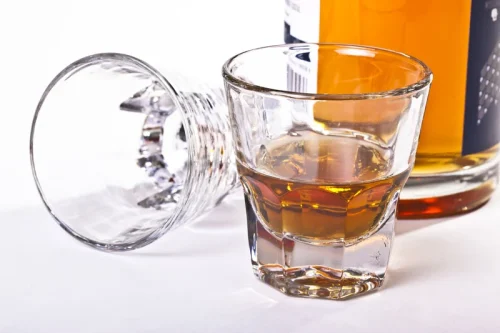
That’s why our approach involves taking time to know you better, identify your triggers, and help chart a path forward that aligns with your life goals. Remember that every person’s journey is unique; there are no one-size-fits-all solutions for managing alcohol intake. People suffering from alcohol addiction will thrive in absolute abstinence and find solace in sobriety groups like Alcoholics Anonymous, while others will less severe drinking habits will be able to manage their relationship with alcohol through controlled moderation techniques without feeling deprived or isolated socially.
Moderation vs. Abstinence: Should You Cut Back or Quit Drinking Completely?
A similar approach was used for dropouts, defined as the number of patients who withdrew from the study at reported time points. Demographics, baseline dependence severity (as measured by the Alcohol Dependence Scale (Skinner & Horn, 1984)), and treatment condition by latent classes are presented in Table 3. Individuals in the low risk drinking classes (Classes 5 and 6) had lower dependence severity than those in the mixed heavy drinking classes (Classes 2 and 4). Individuals who received MET were more likely to be in the heavy and low risk drinking classes (Classes 3 and 5) and those who received CBT were less likely to be in the abstinent and heavy drinking class (Class 3). Our second goal was to examine differences in quality of life betweenabstainers and non-abstainers controlling for length of time in recovery.
Differences between abstinent and non-abstinent individuals in recovery from

This suggests that individuals with non-abstinence goals are retained as well as, if not better than, those working toward abstinence, though additional research is needed to confirm these results and examine the effect of goal-matching on retention. These findings have important implications for clinical practice, as acamprosate was found to be the only intervention with enough high quality evidence for us to conclude that it is better at maintaining alcohol abstinence than placebo. The finding that there is currently controlled drinking vs abstinence little evidence on other interventions, such as disulfiram, for detoxified, alcohol dependent patients in UK primary care settings should lead to the generation of better evidence from high quality pragmatic randomised trials. Separate network meta-analyses by intervention types (psychosocial interventions, drug, or combined drug interventions) were conducted to check the robustness of results to the possibility that treatment effects were not transitive across different approaches of studies to intervention.
Theoretical and empirical rationale for nonabstinence treatment

In this case, moderation serves as a harm reduction strategy that minimizes the negative consequences of drinking. Alcohol had taken its toll—her job, friends, family, and health had all suffered—and she wanted it out of her life. Her counselor agreed that abstinence was a good solution and they took steps to help Reagan achieve this goal. Multivariable stepwise regressions (Table2) show that younger individuals were significantly more likely to benon-abstinent, and movement to the next oldest age category reduced the odds ofnon-abstinence by an average of 27%.
Abstinence Vs. Moderation Management: Success and Outcomes
For one study,23 we grouped disulfiram (1 mg/day) with the placebo (riboflavin) group because the author used the disulfiram group as a control and indicated no reaction between disulfiram and ethanol at this low dose. We coded citalopram and escitalopram as the same node in the network meta-analysis because these two drugs are clinically interchangeable; and the dosage and regimen used in studies that investigated these drugs were aligned with clinical practice. This allowed us to incorporate one study that would otherwise have been excluded.24 A variety of control groups were observed among the included studies. Placebo groups followed the conventional definition, suggesting a physical pill without the active ingredient or ingredients. Treatment as usual groups consisted of standard, conventional treatments and 12 step facilitation. Harm reduction may also be well-suited for people with high-risk drug use and severe, treatment-resistant SUDs (Finney & Moos, 2006; Ivsins, Pauly, Brown, & Evans, 2019).
- You’re here because you’ve taken the first brave step in acknowledging that your relationship with alcohol needs a change.
- These were required because the titles, abstracts, and indexes of many studies do not contain keywords or are poorly indexed.
- Clearly, most research agrees that most alcoholism patients drink at some point following treatment.
- The goal of a moderation program is to support a person’s journey toward understanding their drinking behavior and create a safe environment for them to explore how to drink moderately.
- Remember that the path towards lasting recovery isn’t linear — there will be ups and downs.
- Indeed, this argument has been central to advocacy around harm reduction interventions for people who inject drugs, such as SSPs and safe injection facilities (Barry et al., 2019; Kulikowski & Linder, 2018).

Moreover, strictly abstinence-oriented organizations such as Alcoholics Anonymous (AA), implying abstinence as the treatment aim, and describing individuals with drinking problems as suffering from a disease might lead to the (unintended) stigmatization of people with substance use disorder (SUD) (van Amsterdam and van den Brink, 2013). In turn, stigma and shame have been reported as a reason for not seeking treatment (Probst et al., 2015). Although research indicates that CD may be a possible option for sustained recovery, at least for certain groups and at least later in the recovery process, it seems as if the dominating approach of treatment systems is still abstinence.

Yet, this prior work did not address the question of whether those who achieve low risk drinking during treatment can maintain functional improvements for multiple years following treatment, which is important given concerns that low risk drinking may be a less stable outcome (Ilgen et al., 2008). The goals of the current paper were to address limitations of prior work by examining the association between empirically derived patterns of abstinence, low risk drinking, and heavy drinking during the treatment episode and outcomes at three years following treatment. Several recent studies have evaluated long-term functioning outcomes among individuals classified as low risk drinkers following treatment, yet there have been two primary limitations of this prior work. Thus, these prior studies have not considered low risk drinking during the course of the treatment episode. Studying low risk drinking patterns during the course of the treatment episode is important to inform future clinical decision making regarding the likelihood of long term outcomes.
- Vaillant (1983) labeled abstinence as drinking less than once a month and including a binge lasting less than a week each year.
- Model fit was examined using the Lo Mendell Rubin Likelihood Ratio test (LRT), the Bootstrapped Likelihood Ratio Test (BLRT), Bayesian Information Criterion (BIC) and sample-size–adjusted BIC (aBIC).
- The finding that there is currently little evidence on other interventions, such as disulfiram, for detoxified, alcohol dependent patients in UK primary care settings should lead to the generation of better evidence from high quality pragmatic randomised trials.
- The past 20 years has seen growing acceptance of harm reduction, evidenced in U.S. public health policy as well as SUD treatment research.
- Through family counselling sessions and support groups, loved ones can learn more about addiction and how best to support you on this journey towards sobriety.
- Dr. Stanton Peele, recognized as one of the world’s leading addiction experts, developed the Life Process Program after decades of research, writing, and treatment about and for people with addictions.
However, the current study showed that Class 6 had better drinking outcomes at three years following treatment than Class 5. Individuals with expected membership in Class 5 (low risk and heavy drinking) had a low probability of abstinence days during treatment, whereas individuals in Class 6 (abstinence and low risk drinking) had a higher probability of abstinence days throughout treatment. Some days of abstinence during treatment may be important for longer term functioning among those engaging in low risk drinking during treatment. Those with greater dependence severity were unlikely to be classified as low risk drinkers during treatment and clinicians may consider assessing dependence severity in developing intervention strategies and collaborating with patients regarding the selection of abstinence or low risk drinking goals. For example, in AUD treatment, individuals with both goal choices demonstrate significant improvements in drinking-related outcomes (e.g., lower percent drinking days, fewer heavy drinking days), alcohol-related problems, and psychosocial functioning (Dunn & Strain, 2013).
What Are the Signs of Addiction?
- By iteratively analysing and compiling these in an increasingly condensed form, themes were created at an aggregated level, following a process of going back and forth between transcripts and the emerging themes as described by Braun and Clarke (op. cit.).
- Should it be complete and total abstinence from alcohol, or can an alcoholic learn to use alcohol in moderate, controlled ways?
- The descriptions on how the tools from treatment were initially used to deal with SUD and were later used to deal with other problems in the lives of IPs can be put in relation to the differentiation between abstinence and sobriety suggested by Helm (2019).
We first provide an overview of the development of abstinence and nonabstinence approaches within the historical context of SUD treatment in the U.S., followed by an evaluation of literature underlying the theoretical and empirical rationale for nonabstinence treatment approaches. Lastly, we review existing models of nonabstinence psychosocial treatment for SUD https://ecosoberhouse.com/ among adults, with a special focus on interventions for drug use, to identify gaps in the literature and directions for future research. We identify a clear gap in research examining nonabstinence psychosocial treatment for drug use disorders and suggest that increased research attention on these interventions represents the logical next step for the field.








